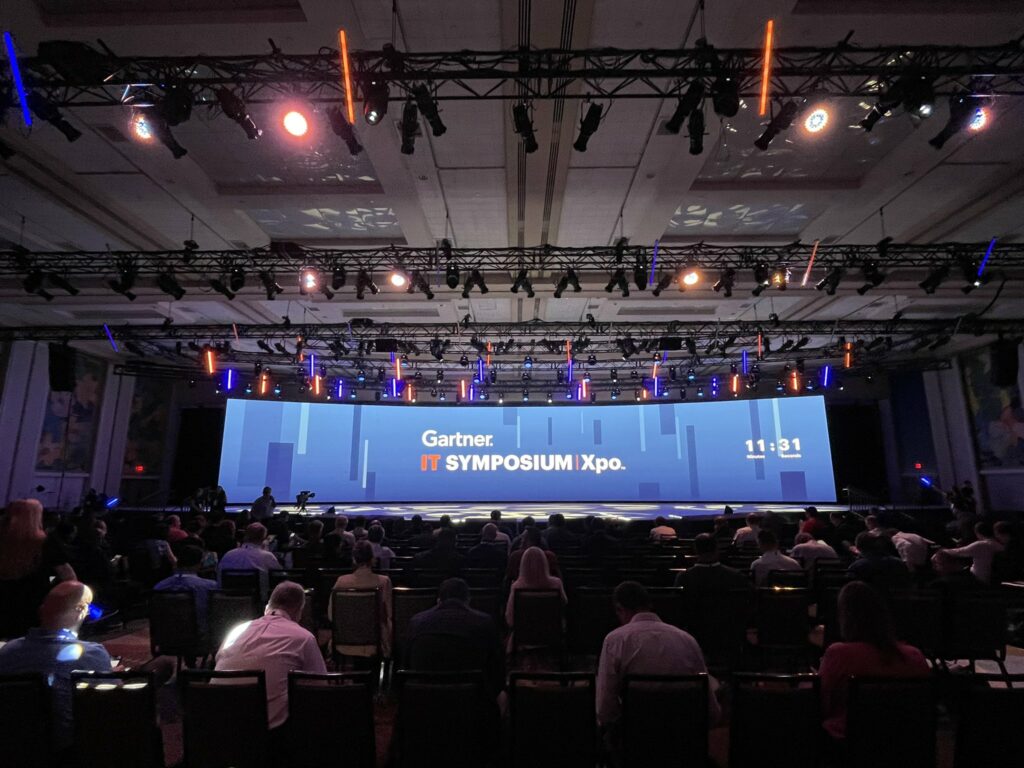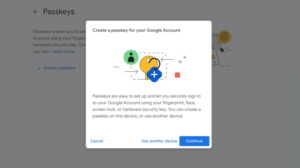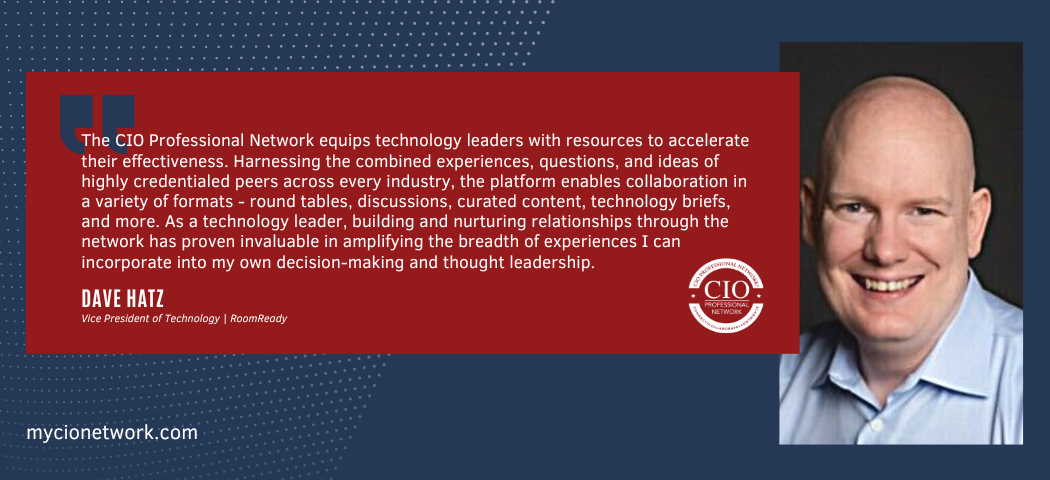Thursday, October 20, 2022
ORLANDO, Fla. – On the final day of the 2022 Gartner IT Symposium, former NFL player and bestselling author, Emmanuel Acho laid out a roadmap for meeting the moment and making a difference in this morning’s final keynote.
Guest Keynote: Illogical: Saying Yes to a Life Without Limits
“I stopped setting goals,” Emmanuel Acho said this morning. “I no longer believe in it. It’s the easiest way to fail.”

Tying back to the theme of the week, Acho encouraged technology leaders to meet the moment by defying logical thinking. “Some of our greatest creations are illogical,” he said and noted that often the only thing holding us back was the fear of other people’s fear.
Acho also used the illustration of a thermometer vs. a thermostat. One simply reads the temperature, while the other has the capacity to change it. By acting as an organizational thermostat, technology leaders have the capacity to change culture, embrace creativity, and make a more diverse organization.
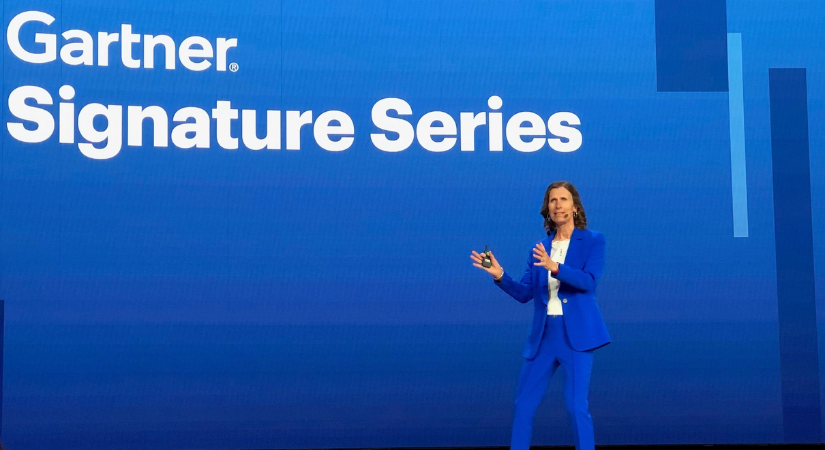
Wednesday, October 19, 2022
ORLANDO, Fla. – Day three of the Gartner IT Symposium began with an address by General David H. Petraeus on strategic leadership and the importance technology leaders will play in the new geopolitical landscape.
Guest Keynote: General David H. Petraeus on Leadership in Changing Times

After nearly four decades in the U.S. military and serving as the director of the CIA, General Petraeus knows a thing or two about strategic leadership. In his keynote address this morning, Petraeus outlined the four pillars of “getting the big idea right.” To lead strategically on either the battlefield or a corporate office, he said, strategic leaders must:
- Get the big ideas right
- Communicate the big ideas effectively
- Oversee the implementation of the big ideas
- Determine the necessary refinement of the big idea and know when to pivot.
He then outlined the strategic position that US business leaders hold in the rapidly changing geopolitical landscape, highlighting the Ukrainian-Russia conflict and the rising economic tension between the United States and China. As the United States continues to balance spinning plates on the world stage, business technology leaders can support the efforts to edge out over our economic rivals.
How to get on a Board of Directors
In her keynote address on Monday, Tina Nunno highlighted the success of organizations with digital maturity, citing research that reported 3x growth for organizations that are digitally savvy. One way to close the gap is to recruit technology executives to the board of directors.
“Having technologists on the board of directors, or individuals who are digitally savvy makes the difference in terms of how that company performs and how they operate,” she said.
In a session on Wednesday, Nunno laid out five steps for technology executives to become board members.
Other than the obvious retirement fund, deciding why you want to be on a board is an important first step. Understanding what contributions you can make as a technology executive will help boards answer the question of why they would want to invest in you. Deciding the type of board, whether non-profit, technology startup, or publically traded, is paramount to understanding what will be a good match.
Creating a board-level CV and networking are other important steps toward joining a board. A majority of board positions are still found through networking, and using your CEO and board of directors at your organization can be an excellent tool.
Finally, stay picky and choose your first board wisely, said Nunno. Be sure to ask questions, understand the risk and ensure that the board is the right fit for you. Once you join one, the rest will follow.
Seven disruptions you might not see coming in 2022-2027
“What if?” is one of the biggest questions of our times, says Gartner Distinguished VP Analyst Daryl Plummer. Asking “what if” can help CIOs prepare for the opportunities and risks that come with disruption.
“What if people prefer living and working in the Metaverse?”
“What if a flying taxi service takes off?”
“What if graphene reinvigorates Moore’s Law?”
These were among the questions Plummer posed during his session highlighting seven disruptions that CIOs might not see coming in 2022-2027 and what they can do to prepare.
The list included metaverse work experiences, flying cars (in the form of a flying taxi service operating on multiple electric engines), and silicon being replaced by graphene – a move that could impact manufacturing supply chains and electronic device development roadmaps.
Other disruptions to keep an eye on include:
The digital human economy – Plummer noted that when you have a machine providing everything from legal advice to report writing, leaders may someday be “buying, hiring, and firing these personas as part of our workforce.”
The “decentralized autonomous organization” – In this programmable economy, DAO could take humans out of key processes, disrupting talent supply and demand and corporate organization models.
Wireless Electric Vehicle charging – Noting that moving to wireless charging is an expensive proposition, Plummer said its something CIOs should keep in mind as they think about future fleet upgrades.Tech becomes disposable – What if the tech industry mirrors the throwaway fashion industry, with composable business architectures and thinking helping drive disposability? CIOs can plan for this by revamping software teams into product teams focused on rapidly evolving new outcomes.
Tuesday, October 18, 2022
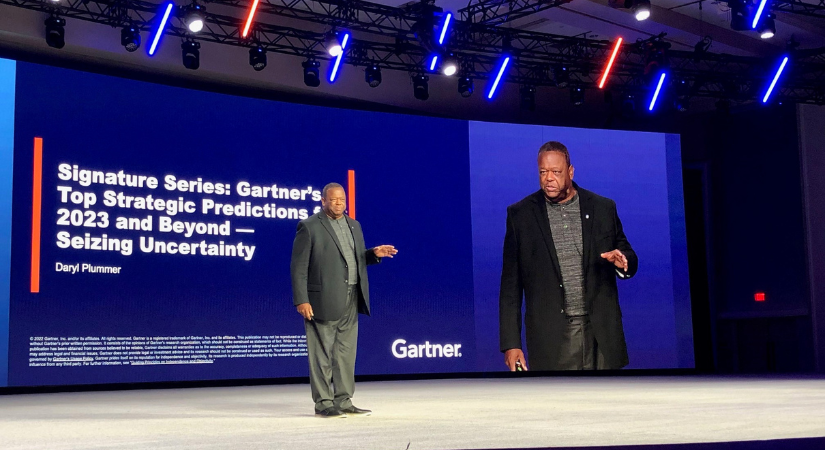
Orlando, Fla. – Day two of the Gartner IT Symposium started off strong with a Keynote Interview of Accenture’s Global CEO, Julie Sweet.
Keynote Interview: Julie Sweet, Global CEO, Accenture
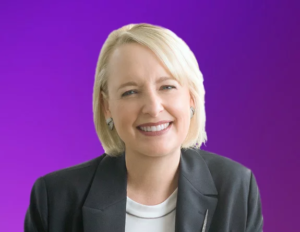
“If your dreams don’t scare you, then they aren’t big enough.” Julie Sweet, Accenture’s Global CEO, challenged her audience to set goals that push the limits of reality in this morning’s keynote interview. In her time as CEO, Sweet has made major pushes to revolutionize how Accenture uses technology in all aspects of business, including utilizing the metaverse to onboard new employees – a program called the “Nth Floor.”
As a lawyer by training, Sweet calls herself a business leader with legal experience and challenges technology leaders to identify themselves in the same way: business leaders with technology experience. As technology becomes critical for all enterprises, including Accenture, Sweet emphasized the importance of everyone, not just the IT department, understanding the value of technology.
Top Strategic Predictions for 2023 and Beyond – Seizing Uncertainty
With an ever growing threat of inflation, war, and general uncertainty around the world, enterprises must embrace uncertainty by reimagining and redefining basic assumptions of what is holding organizations back.
“Uncertainty carries as much opportunity as it does risk,” said Daryl Plummer, Distinguished VP Analyst and Gartner Fellow. “The key to unlocking those opportunities is to reimagine assumptions – especially those rooted in a pre-digital past – around how work is done, how relationships between customers and providers will evolve and how current trends will unfold.” Plummer outlined 10 areas of uncertainty that will unfold over the next decade.
- Through 2027, fully virtual workspaces will account for 30% of the investment growth by enterprises in metaverse technologies and will “reimagine” the office experience.
- By 2025, without sustainable artificial intelligence (AI) practices, AI will consume more energy than the human workforce, significantly offsetting carbon zero gains.
- By 2026, citizen-led denial of service (cDOS) attacks, using virtual assistants to shut down operations, will become the fastest growing form of protest.
- Through 2025, powerhouse cloud ecosystems will consolidate the vendor landscape by 30% leaving customers with fewer choices and less control of their software destiny.
- Through 2024, jointly owned sovereignty partnerships sanctioned by regulators will increase stakeholder trust in global cloud brands and facilitate continued IT globalization.
- By 2025, “labor volatility” will cause 40% of organizations to report a material business loss, forcing a shift in talent strategy from acquisition to resilience.
- By 2025, shareholder acceptance of moonshot speculative investments will double, making them a viable alternative to traditional R&D spend to accelerate growth.
- By 2027, social media platform models will shift from “customer as product” to “platform as customer” of decentralized identity, sold through data markets.
- By 2025, organizations that remediate documented gender pay gaps will decrease women’s attrition by 30%, reducing pressure on talent shortages.
- Through 2025, employee value metrics like well-being, burnout, and brand satisfaction will override return on investment (ROI) evaluations in 30% of successful growth investment decisions.
What the best CX organizations do
Organizations looking for ways to grow or maintain revenue during times of economic uncertainty may want to double down on customer experience.
New Gartner research presented Tuesday showed just how powerful CX can be in helping organizations increase or maintain revenues in times of hardship. The 2021 Gartner Customer Experience Baseline Study found that executives who self-identified as having best-in-class CX during the pandemic were more likely to see an increase in revenue than organizations that offered only mainstream or trailing CX.
The study also found that 76 percent of executive leaders see CX as critical to meeting organizations’ business goals.
“The truth is: Customer experience matters,” said Gartner Distinguished VP Analyst Don Scheibenreif, who presented findings.
Scheibenreif shared practical actions CIOs and their executive peers can take to advance customer experience in their organizations, including:
- Appointing a CX leader who reports to a C-level executive
- Creating a CX Center of Excellence
- Advocating for the creation of a CX steering committee that includes representation from functions such as IT, sales, marketing, customer service, and even HR
While CIOs may not be able to take all of those actions themselves, they can influence their executive peers in that direction, Scheibenreif said.
Talking Tech Truths with The New York Times
Cindy Taibi has been with The New York Times for 41 years and watched history unfold over and over again from the perspective of the newsroom. This afternoon, she shared the lessons she learned from the pandemic in a fireside chat hosted by Joe Wilson, CTO of Workday.
Reporters by nature are a mobile, remote workforce, and while the Times had many collaborative tools already in place before the pandemic, there was still a cultural shift. As 40 corporate locations became 4,000, Taibi noticed that colleagues began to see each other in a different light as cats walked across keyboards and toddlers sat on laps during video meetings. “We’re a company that values gender diversity and racial diversity, and workstyle diversity is something that resonates with me,” Taibi said.
By embracing workstyle diversity and offering a portfolio of tools rather than consolidating to a certain set, The New York Times is able to become a talent leader. People have to like the tools they use, and they’re more likely to stay if they do, something that is imperative in the war for talent.
“Without the pandemic, I would not have discovered all of this.”
Monday, October 17, 2022
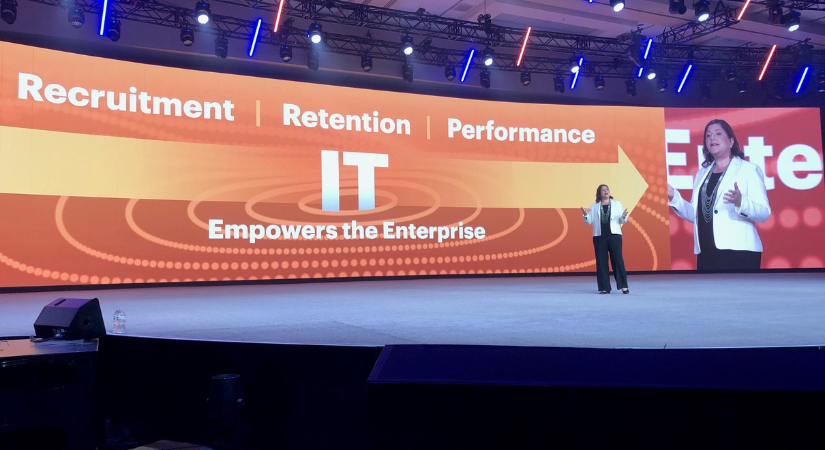
Orlando, Fla. – In the first Gartner IT Symposium since the pandemic began in 2020, Gartner analysts recognize that CIOs and technology executives are leading in a totally changed world. Not only has technology become a central role in enterprise success, CIOs are taking on strategic, non-technology leadership roles as organizations face disruptions on every front.
Keynote: Meet the Moment, Make the difference.
This morning’s keynote speakers outlined three ways IT leaders can drive sustainable growth in their organizations. By revolutionizing work (once again) IT leaders and CIOs can take the friction out of work by tech-enabling the workforce, reducing friction, and experimenting with the “highly visible and highly hyped.”
“IT now matters more than ever in the recruitment, retention, employee engagement and high performance of all enterprise employees, not just IT. However, a new Gartner survey found that only 31% of employees said that they have the technology they need,” said Tina Nunno, Distinguished VP Analyst at Gartner. “This provides a tremendous opportunity for CIOs to make the difference. Employers who revolutionize the work and empower their workers with technology will become the employers of choice.”
Responsible investment, a two-for-one deal, is a winning strategy for financial investment and sustainability investment. Intelligent Connected Infrastructure, autonomous sourcing, and reducing digital energy usage are three primary ways CIOs and IT leaders can earn ROI on financial and sustainability goals, according to Kristin Moyer, Distinguished VP Analyst at Gartner.
As the threat of ransomware and cyberattacks continue to rise, resilient cybersecurity is the third pillar for sustainable growth. Boards of Directors now see security as a business risk, not a technical risk, and one needing a new kind of investment, according to Paul Proctor, Distinguished VP Analyst at Gartner. By managing the attack surface, protecting business outcomes, and using outcome-driven metrics, technology leaders can protect their brand and ensure their organization is a company of choice for potential employees and customers.
The New Value Proposition for the Role of the CIO
As the role of the CIO expands and evolves, technology leaders can increase their support of key stakeholders by redesigning their value proposition. Irving Tyler, Distinguished Research Vice President at Gartner defines the CIO’s value proposition as “the promise you make to key stakeholders to equip and enable them to do their jobs through technology to accomplish their desired outcomes.” Key stakeholders include the executive team, peers in the C-suite, and technologists. Each stakeholder, no matter the level, is looking for CIOs to assist with their jobs, alleviate their pains, and support their gains.
Top Predictions for Cybersecurity 2022-2023
As highlighted in the keynote, cybersecurity is top of mind for CIOs and technology leaders, and Boards of Directors and C-suite members acknowledge it as a business risk. Sam Olyaei, Vice President of Gartner Research, highlighted eight areas that will affect enterprise security over the next five years:
- Through 2023, government regulations requiring organizations to provide consumer privacy rights will cover 5 billion citizens and more than 70% of the global GDP.
- By 2025, 80% of enterprises will adopt a strategy to unify web, cloud services, and private application access from a single vendor’s SSE platform.
- 60% of organizations will embrace Zero Trust as a starting point for security by 2025. Over HALF will fail to realize the benefits.
- By 2025, 60% of organizations will use cybersecurity risk as a primary determinant in conducting third-party transactions and business engagements.
- Through 2025, 30% of nation-states will pass legislation that regulates ransomware payments, fines, and negotiations, up from less than 1% in 2021.
- By 2025, threat actors will have weaponized operational technology environments successfully to cause human casualties.
- By 2025, 70% of CEOs will mandate a culture of organizational resilience to survive coinciding threats from cybercrime, severe weather events, civil unrest, and political instabilities.
- By 2025, 40% of boards of directors will have a dedicated cybersecurity committee overseen by a qualified board member, up from less than 10% in 2021.
Coach K on leadership and plural pronouns
Attendees were treated to a leadership rallying cry from legendary coach Mike Krzyzewski, aka Coach K, who coached the USA men’s basketball team to gold and the Duke men’s basketball team for 42 years before retiring last year.
Coach K encouraged the CIOs to follow his five values when leading their teams. Among them are communication and trust. He spoke of his days at West Point and cited the military academy’s famed honor code: “A Cadet will not lie, cheat, steal, or tolerate those who do.” Bringing that notion into the real world, Krzyzewski asked attendees to imagine how effective they could be if they could genuinely trust that anything said in a meeting was true.

“Imagine you had a team where if somebody on the team says something to someone on the team they believed one another,” he said, continuing: “Are you kidding me? It’s [trustworthy communication] – the biggest force multiplier on Earth.”
Krzyzewski told the crowd he “studied Gartner,” saying: “It’s intriguing to me that someone can give you the right answers” and went on to ask why someone from Gartner didn’t sit next to him during games to tell him if his plays were right.
His keynote was packed with stories from his coaching days and the lessons he imparted and learned along the way. Rounding out his five values were care, collective responsibility, and pride.
Speaking about collective responsibility, he said it’s important that there’s never finger-pointing on a team or at an organization if something goes haywire. Leaders don’t say “I” or point fingers and say “you,” he said.
“A really good organization doesn’t have singular pronouns. It only has plural pronouns,” he said.



